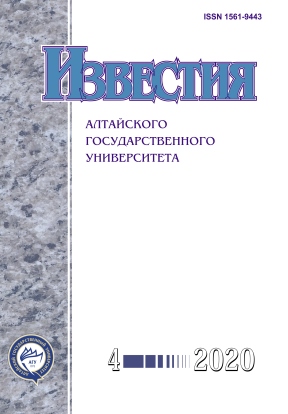On Estimation of Parameters of a Three-Dimensional Uniform Regression Model
УДК 519.87
Abstract
Typically, a researcher faces computational difficulties in assessing the parameters of a certain model when modeling the relationship between different indicators of analysis. A suitable model is generally obtained by a sequential refinement of the features included in its composition and, therefore, by performing multiple repetitions of computational algorithms. At the same time, the computational complexity of these algorithms begins to play a significant role in modeling. A certain set of indicators is used to reduce the number of iterations. These indicators are responsible for the quality of the constructed model and capable of “signaling" about the need to adjust the model. The model parameters and the quality functional value are such indicators in regression modeling. They are able to answer the question of the appropriateness of building a particular model and are indicators of the quality of the resulting functional dependence.
In this paper, we study methods and algorithms for constructing and evaluating the main indicators of L∞-regression — a quality indicator and model parameters. The first part of the paper describes the most efficient computational procedures for determining parameters in the case of a three-dimensional uniform regression model, indicates the complexity of these algorithms, and gives a geometric interpretation. In the second part of the paper, a series of theorems on estimating the values of the parameters of threedimensional L∞-regression is presented, and a formula for calculation of an indicator of sample uniformity is provided.
Downloads
Metrics
References
Ponomarev I.V., Slavsky V.V. Uniformly fuzzy model of linear regression // Journal of Mathematical Sciences. 2012. Vol. 186, Issue 3. DOI: 10.1007/s10958-012-1002-1.
Карманов В.Г. Математическое программирование. 3-е изд. М., 1986.
Сантало Луи А. Интегральная геометрия и геометрические вероятности. пер. с англ. / под ред. Р.В. Амбарцумяна. М., 1983.
Половинкин Е.С., Балашов М.В. Элементы выпуклого и сильно выпуклого анализа. М., 2004.
Barber C.B., Dobkin D.P., Huhdanpa H.T. The Quickhull Algorithm for Convex Hulls // ACM Transactions on Mathematical Software. 1996. Vol. 22, № 4.
David M. Mount. Computational Geometry. University of Maryland, 2002.
Махаева Т.П., Пономарев И.В. Об оценке степени однородности выборки в равномерно-регрессионной модели // Известия Алт. гос. ун-та. 2020. № 1(111). DOI: 10.14258/izvasu(2020)1-19.
Брюс П., Брюс Э. Практическая статистика для специалистов Data Science : пер. с англ. СПб., 2018.
Кобзарь А.И. Прикладная математическая статистика. М., 2006.
Минк Х. Перманенты. М., 1982.
Izvestiya of Altai State University is a golden publisher, as we allow self-archiving, but most importantly we are fully transparent about your rights.
Authors may present and discuss their findings ahead of publication: at biological or scientific conferences, on preprint servers, in public databases, and in blogs, wikis, tweets, and other informal communication channels.
Izvestiya of Altai State University allows authors to deposit manuscripts (currently under review or those for intended submission to Izvestiya of Altai State University) in non-commercial, pre-print servers such as ArXiv.
Authors who publish with this journal agree to the following terms:
- Authors retain copyright and grant the journal right of first publication with the work simultaneously licensed under a Creative Commons Attribution License (CC BY 4.0) that allows others to share the work with an acknowledgement of the work's authorship and initial publication in this journal.
- Authors are able to enter into separate, additional contractual arrangements for the non-exclusive distribution of the journal's published version of the work (e.g., post it to an institutional repository or publish it in a book), with an acknowledgement of its initial publication in this journal.
- Authors are permitted and encouraged to post their work online (e.g., in institutional repositories or on their website) prior to and during the submission process, as it can lead to productive exchanges, as well as earlier and greater citation of published work (See The Effect of Open Access).








